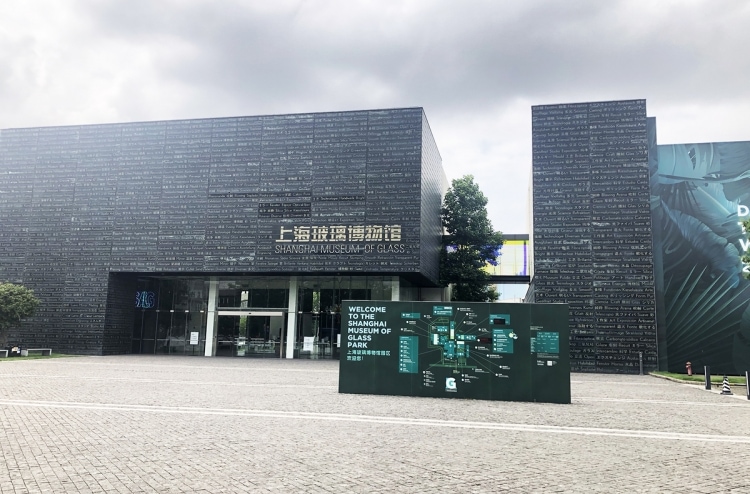An enchanting journey at Shanghai Museum of Glass
Glass has always had a very special role in human life. Its nature, being at the same time highly technological and functional and uncommonly expressive and alluring, gives it a character of magic. It is the quintessential material able to link both practical and emotional human expectations. Last week, in Shanghai, I experienced an uncanny journey in its multifaceted world.
The Shanghai Museum of Glass, designed by logon in collaboration with coordination asia, dedicates its space to the extraordinary essence of glass, which becomes the absolute protagonist of a 17,800 sqm multi-functional park.
Opened in 2011, it is located on a former glass manufacturing site in the city’s industrial Baoshan district. The Shanghai Glassware Factory was turned into a Museum, with many of its original remnants still visible. The revival demonstrates how art and culture can be fostered from old, and often forgotten industrial landscapes.
I visited this Museum and I was very impressed by the richness of details and the compelling power of the narration showing the complexity of the glass’ universe in a refined, high quality and engaging way.
The site is entirely conceived around the manifold possibilities and features of the glass, presenting a shifted perception of depth and spatiality obtained through a balanced use of light and darkness, transparency and multi-layered spaces. The glass is both content and container of the exhibition, in fact it is also used to give personality and elegance to the space, creating a magic atmosphere of refractions, reflections and overlapping transparencies.
The Museum offers an immersive and interactive experience in the complex world of the glass, dealing with different aspects, from the scientific, historical, technological, manufacturing, artistic and design point of views and offers an educational section for kids too.

Shanghai Museum of Glass, The Structure of Glass: order and chaos, installation representing the chemical structure of glass.
There is a part dedicated only to the chemistry and science behind the glass, presenting all the different typologies and qualities of minerals and crystals used to make it and to achieve special features, such as specific colors.
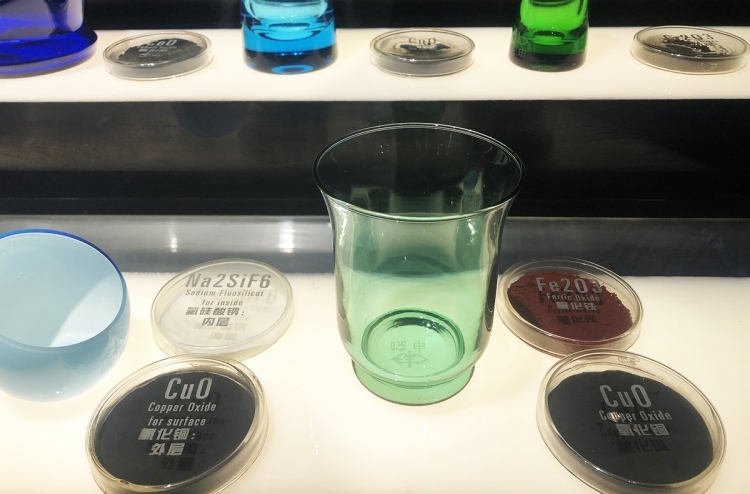
Shanghai Museum of Glass, How does Glass form its color?, display of the pigments and processes involved in glass coloring.
There is a section dedicated to the lenses and their capability to distort images which is supported by a series of interactive tools, such as levers and buttons that enable the visitor to play with lenses to discover and understand.

Shanghai Museum of Glass, Convex Lens: the fantastic magnifying Glass, exhibit about light effects through lenses.
The whole exhibition is supported by a reach and relevant selection of both digital contents, through screens and projections, and physical objects, such as precious and raw materials and artifacts. Through a perfect mix of virtual and real, the narrative results fresh, engaging and exhaustive.

Shanghai Museum of Glass, Sheet Glass Making: from blowing Glass bubbles to mechanized processing, display about glass manufacturing technologies, mixed digital and mechanical media.
For example, the section dedicated to the history of glass production and manufacturing and to the evolution of objects, from vases to jewelry, is a great example of an effective exhibit design: a dark room filled with projections on walls and spotlights on relevant contents which guide the visitor in a pleasant and fascinating learning experience.

Shanghai Museum of Glass, Development of Technology and Craftmanship, section dedicated to the history of glass.

Shanghai Museum of Glass, Development of Technology and Craftmanship, detail of the section dedicated to the history of glass, Egypt.
After the black space where the scientific and aesthetic values of the material are unveiled through the sensual use of light and transparency, an interactive wall lights up to provide an active experience of learning: visitors are invited to interact with the wall to discover special features of the glass.
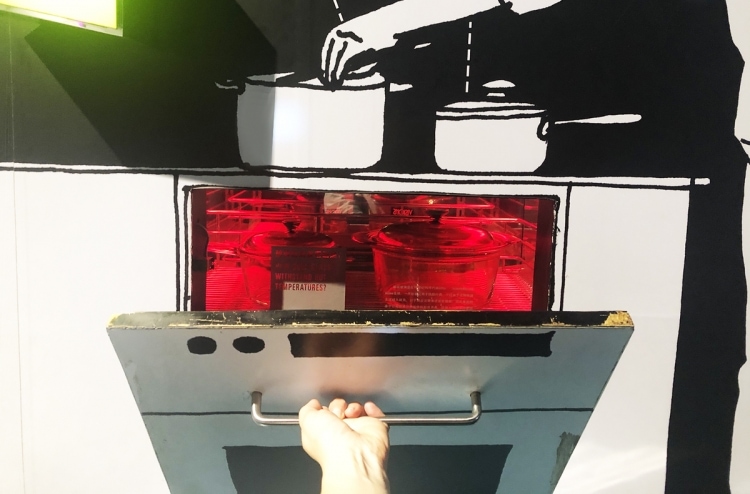
Shanghai Museum of Glass, From Daily Life to Cutting Edge Technology, interactive section where the visitor can play with the wall to discover properties of glass used during everyone’s daily life.
On the second floor, we find ourselves absorbed in the artistic dimension of the material. During the years, through collaborations with renowned national and international artists, Shanghai Museum of Glass has created a platform for art, presenting impressive exhibitions, such as “to Keep It Glassy” series exhibition, and the cross-border “Annealing” series exhibition, started in 2015, fusing glass and contemporary art together mutually.

Shanghai Museum of Glass, a house of Glass at the center of the second floor. Current exhibition: Glassduo, glass harp music group from Poland.
There is a comprehensive collection of artworks produced with varied techniques and technologies, ranging from classic blow glass to digital works representing and imitating the material’s behavior. “In the Shanghai Museum of Glass, glass art and design cross the border between time, space, culture and language, and are presented to the public audience in different cross-type forms.” (cit. Shanghai Museum of Glass).

Warm Currents, 2018, Lin Tianmiao, a large circular structure consisting of glass beakers and vials slowly rotates in two directions with pink florescent fluid running inside, permanent collection, Shanghai Museum of Glass.
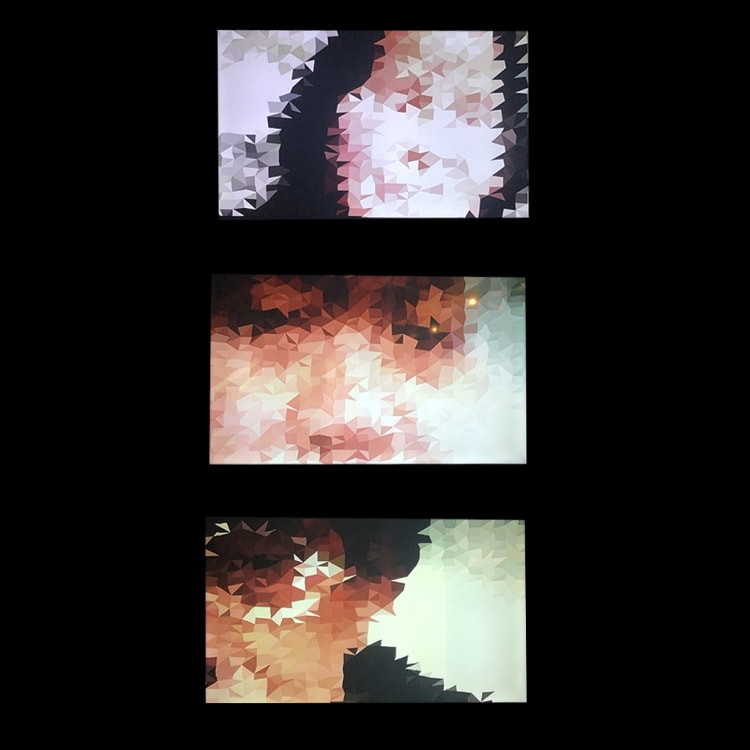
Generations, 2011, Light Installation, 10 x Stainless Glass Windows, 490x260 cm, commissioned by Tilman Thürmer, director of Shanghai Museum of Glass.
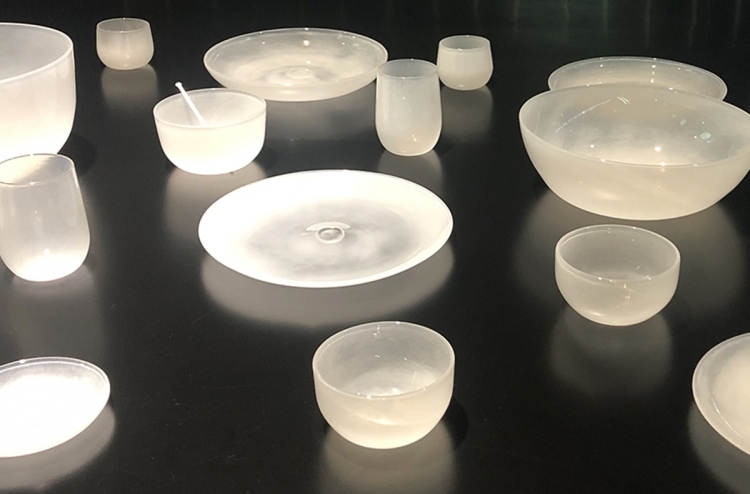
In Between, 2010, Boaz Cohen and Sayaka Yamamoto, collection of hand-blown glass tableware for Inframince, Shanghai Museum of Glass.
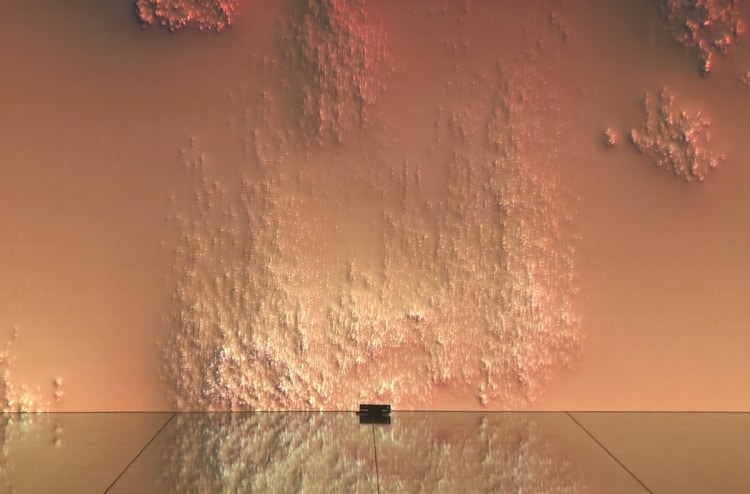
Fusion, 2017, Tobias Gremmler, Interactive Media Installation, LED Wall, 673x452 cm and mirror, Shanghai Museum of Glass.
One of the aims is to preserve the memory of the previous glass factory’s prolific activity and, at the same time, to become a site of value and cultural activism for the city of Shanghai. For this reason, it is also a place of education, divulgation and making, by organizing events where people can actively participate. It is equipped with laboratories and workshops.
In 2017 the Museum was renovated and expanded with a new wing dedicated to Design, where it’s possible to see representative works of renowned international designers, such as Campana brothers, Nendo, Nina Jobs, David Derksen, Anna Ter Haar, etc…

Transience Mirror, 2012, Lex Pott and David Derksen, sulphur oxidized mirror, Shanghai Museum of Glass.
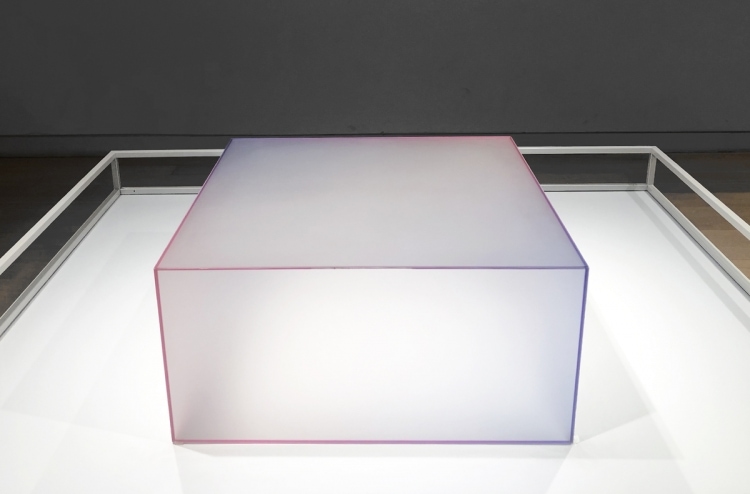
Soft, 2015, Nendo, low tables, frost glass sheets, colors printed corners, Shanghai Museum of Glass.
This Museum has been mentioned and published by the most relevant Architecture and Design channels since its opening in 2011, and, after visiting it, I can truly say that its vision and purposes are very clear and reached in a high qualitative way. Walking through its spaces is a kind of “techno-poetic” journey in the world of one of the most fascinating material on Earth.

 English
English 日本語
日本語
